The Amazon rainforest, also known as the Amazon is the most biodiverse terrestrial ecosystem on the planet. Stretching over 6.7 million square kilometers in nine South American countries – including Brazil, Peru, Colombia, Ecuador and Bolivia – it harbors unparalleled biological wealth.
This article offers a professional and up-to-date overview of the emblematic fauna of the Amazon, with a focus on outstanding species, key habitats and recommendations for travelers interested in responsible natural experiences.
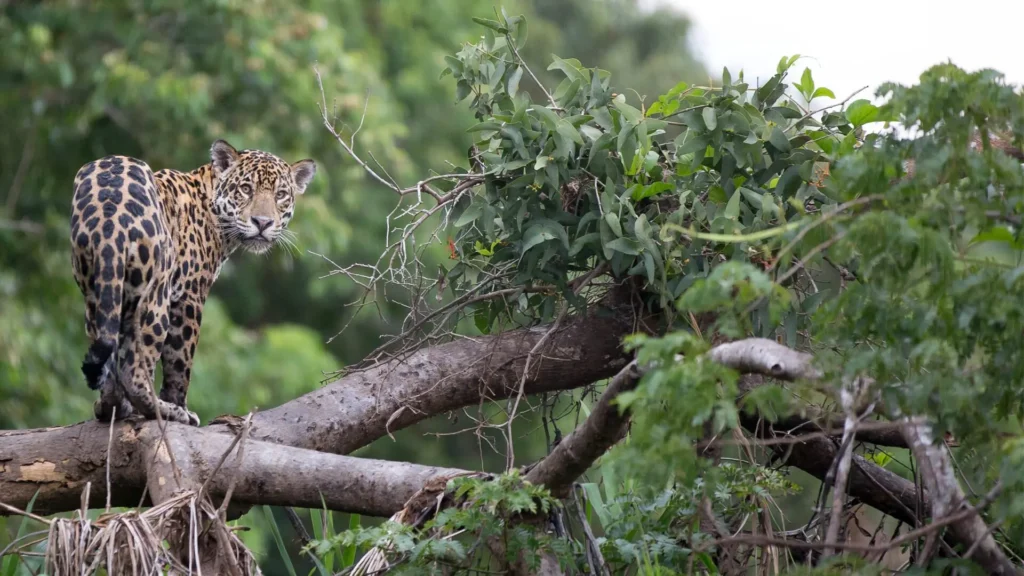
The Amazon represents approximately 10% of the world’s known biodiversity. According to data from WWF and the Amazon Research Institute (INPA), the region has been identified:
- More than 2.5 million species of insects
- About 2,500 species of fish
- More than 1,500 bird species
- Around 500 mammal species
- And more than 40,000 species of plants
This extraordinary biological wealth makes the Amazon a priority destination for ecotourism, scientific research and global conservation.
Emblematic Species of the Amazonian Fauna
The following are some of the most representative species of the Amazonian ecosystem, classified by biological groups.
Mammals
| SPECIES | CHARACTERISTICS | HABITAT | STATE OF CONSERVATION |
|---|---|---|---|
| Jaguar(Panthera onca) | Largest cat in the Americas; top predator of the ecosystem. | Riparian zones and humid forests. | Near threatened |
| Red Howler Monkey(Alouatta seniculus) | Emits powerful howls; lives in social groups. | High treetops. | Vulnerable |
| Pink river dolphin(Inia geoffrensis) | Endemic to Amazonian rivers; color varies from gray to pink. | Main rivers and tributaries. | Vulnerable |
| Three-toed Sloth(Bradypus variegatus) | Slow moving; lives most of the time in trees. | Flooded forests. | Least Concern |
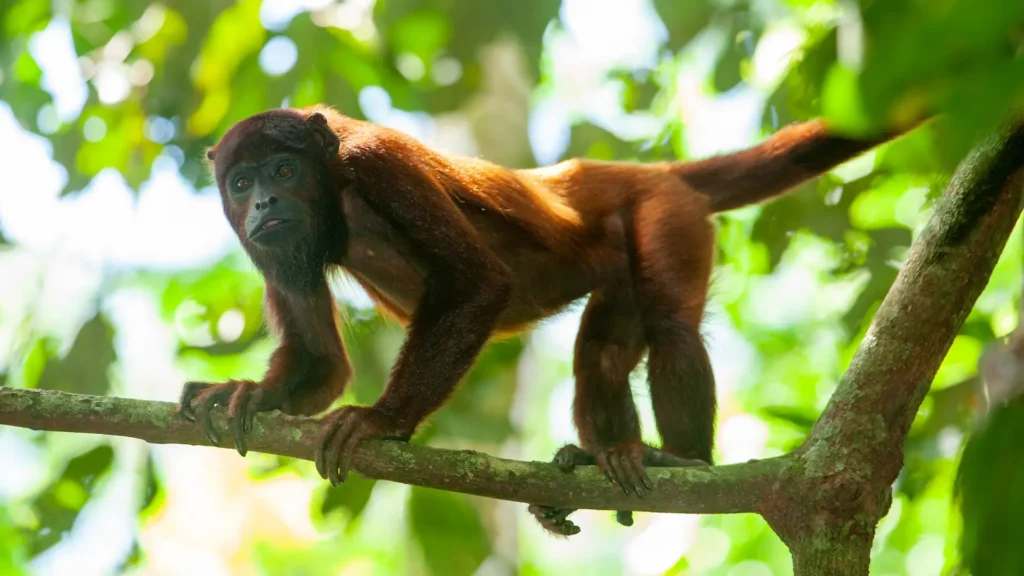
| SPECIES | CHARACTERISTICS | HABITAT | CONSERVATION STATUS |
|---|---|---|---|
| Spoon-billed Toucan(Ramphastos vitellinus) | Long, colorful beak; fruit-based diet. | Primary forests. | Least concern |
| Blue and Yellow Macaw(Ara ararauna) | Vibrant feathers; flies in pairs or flocks. | Open areas and jungle edges. | Endangered |
| Harpy eagle(Harpia harpyja) | Most powerful bird of prey in the Americas; hunter of monkeys and sloths. | Dense, undisturbed forests. | Near threatened |
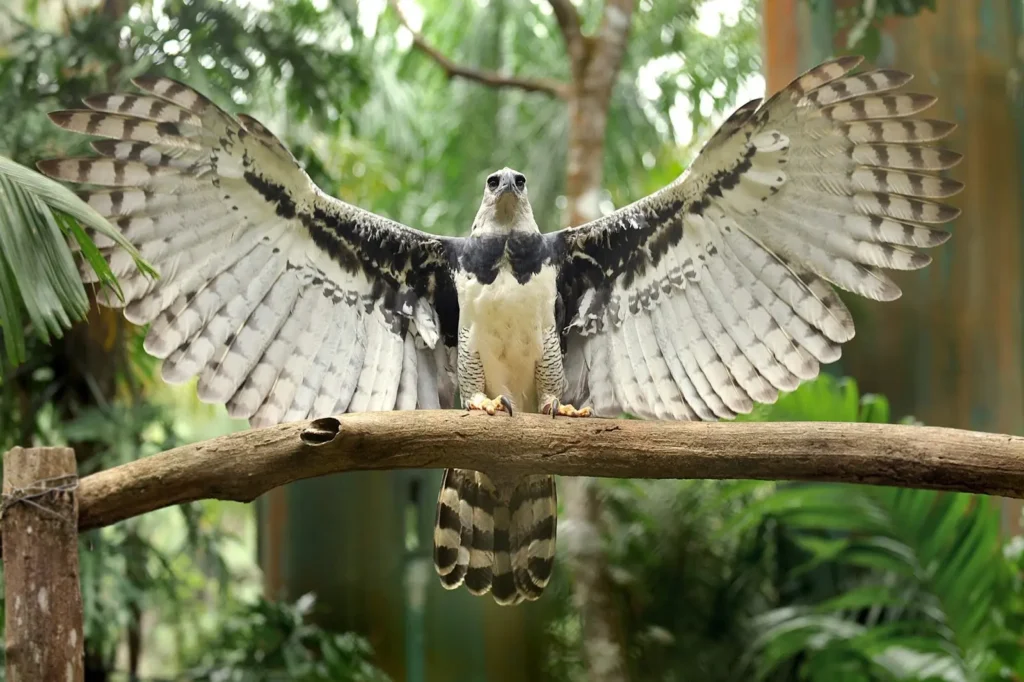
| SPECIES | CHARACTERISTICS | HABITAT | CONSERVATION STATUS |
|---|---|---|---|
| Green Anaconda(Eunectes murinus) | One of the heaviest snakes in the world. | Lakes, swamps and slow rivers. | Minor concern |
| Black Caiman(Melanosuchus niger) | Can reach up to 5 meters; endemic species. | Still waters and streams. | Vulnerable |
| Arrow Dart Frog(Phyllobates terribilis) | Highly toxic; traditionally used by indigenous people. | Humid areas of southwestern Colombia. | Critically endangered |
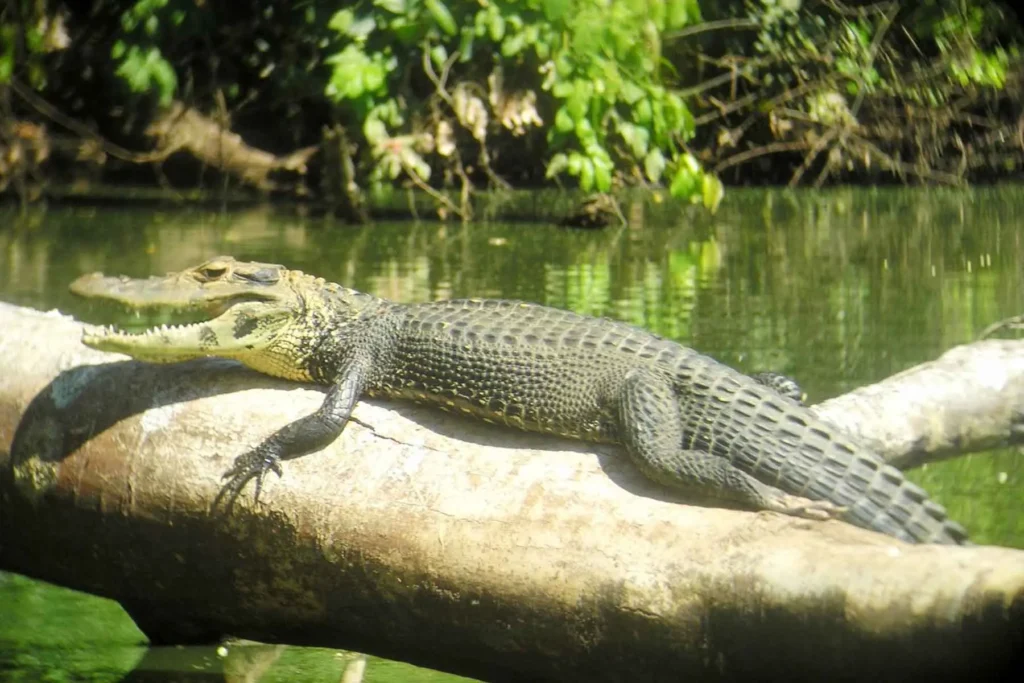
| SPECIES | CHARACTERISTICS | HABITAT | CONSERVATION STATUS |
|---|---|---|---|
| Red Piranha(Pygocentrus nattereri) | Known for its sharp teeth, although it is not aggressive without provocation. | Freshwater rivers and lagoons. | Minor concern |
| Archerfish(Toxotes chatareus) | Able to shoot water jets to hunt insects. | River banks and shallow areas. | Minor concern |
| Piranha(Brachyplatystoma filamentosum) | One of the largest freshwater fish in the world. | Deep rivers and strong currents. | Insufficient data |
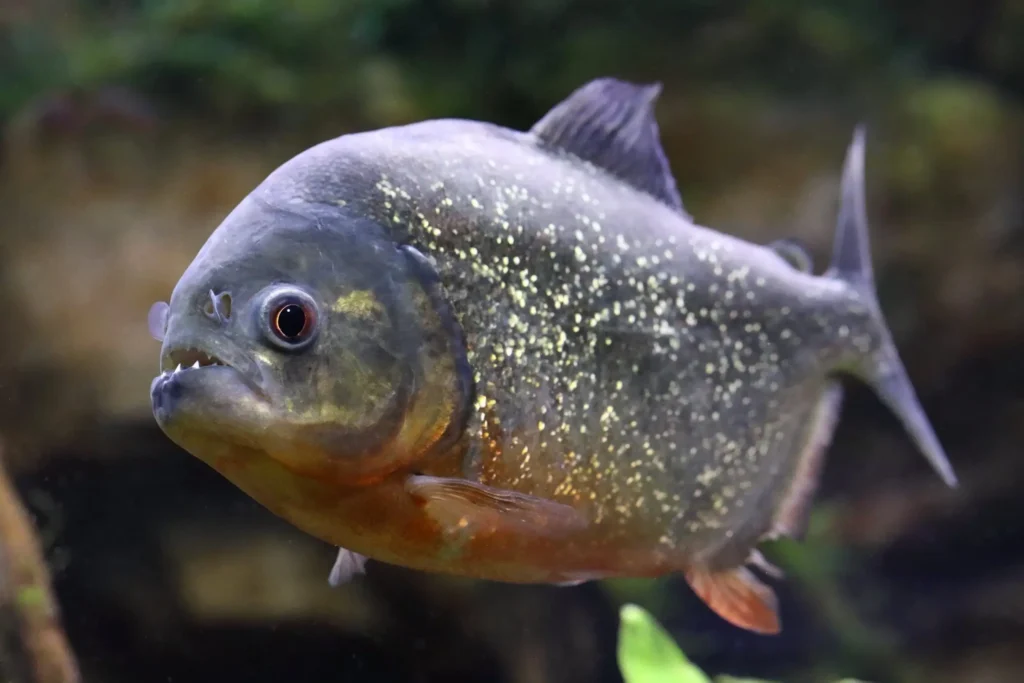
Red piranha
3. Recommended Wildlife Sighting Destinations
For travelers interested in authentic and sustainable natural experiences, we recommend the following destinations, recognized for their biodiversity and responsible tourism management:
3.1 Iquitos, Peru
- Main attractions: Amazon River, Pacaya-Samiria Reserve, pink dolphins.
- Activities: Boat tours, guided hikes, bird watching.
- Recommended operators: Agencies certified by PROMPERÚ and Rainforest Expeditions.
3.2 Leticia, Colombia
- Main attractions: Amacayacu National Park, meeting of rivers (Amazon, Negro, Putumayo).
- Activities: Primate watching, visits to indigenous communities, snorkeling in rivers.
- Sustainability: Community-based tourism programs with indigenous reservations.
3.3 Yasuní, Ecuador
- Main attractions: Yasuní National Park (UNESCO), one of the most biodiverse places in the world.
- Activities: Night hikes, observation towers, ethnobotany workshops.
- Certification: Protected area under international conservation standards.
3.4 Manaus, Brazil
- Main attractions: Meeting of the Waters (Negro and Solimões), Ducke Reserve.
- Activities: River navigation, controlled sport fishing, wildlife rescue centers.
- Accessibility: International airport with regional connections.
4. Recommendations for Responsible Travelers
To ensure a safe, respectful experience in harmony with the environment, it is recommended:
- Hire certified guides with local knowledge and first aid training.
- Choose sustainable tour operators, preferably associated with certifications such as Rainforest Alliance or GSTC.
- Avoid physical contact with wildlife. Do not feed or handle animals.
- Use mosquito repellent with DEET or natural alternatives and long-sleeved clothing.
- Respect the rules of the protected areas and follow the indications of the park rangers.
- Minimize waste: carry reusable bottles, avoid single-use plastics.
- Support local communities through the purchase of authentic handicrafts and community services.
5. Threats and Conservation
Despite its ecological value, the Amazon faces serious threats:
- Accelerated deforestation due to agriculture, cattle ranching and illegal mining.
- Poaching of species such as jaguar and macaw.
- Mercury contamination of rivers in gold mining areas.
- Climate change, which alters flood and drought cycles.
Organizations such as WWF, Conservation International and Sociedad Peruana de Derecho Ambiental (SPDA) are actively working on conservation projects, satellite monitoring and strengthening protected areas.
6. Conclusion
The fauna of the Amazon rainforest is an invaluable natural treasure, both from an ecological and tourist point of view. Its responsible observation not only enriches the traveler, but also contributes to the conservation of a key ecosystem for the balance of the planet.
We invite visitors to plan their trips with sustainability criteria, choosing experiences that respect nature and empower local communities.
No comments:
Post a Comment